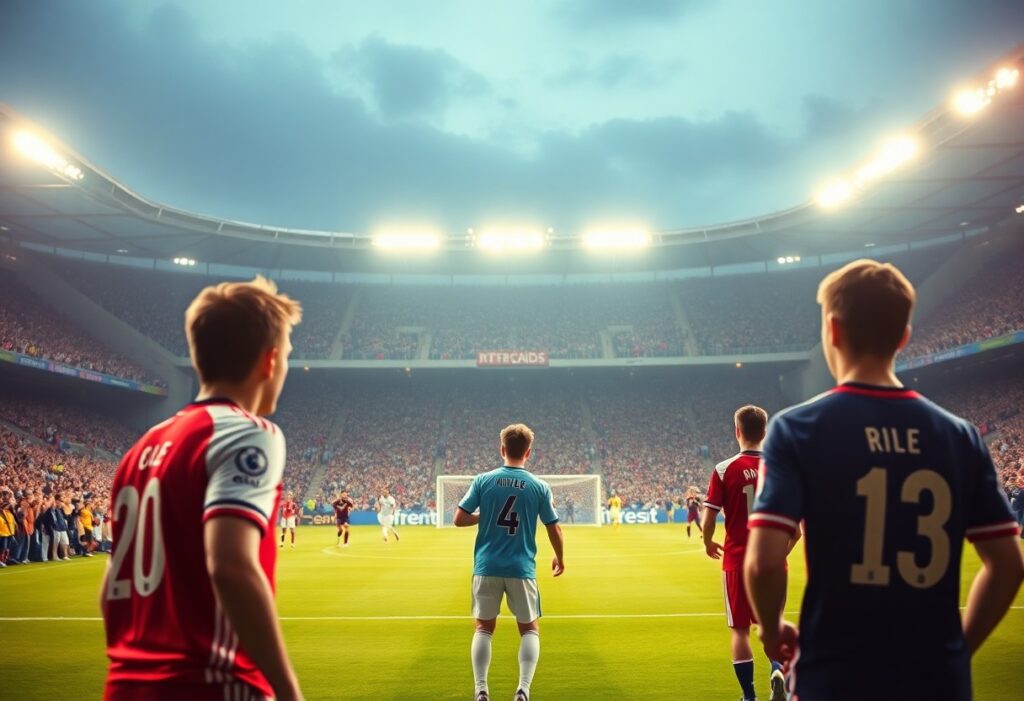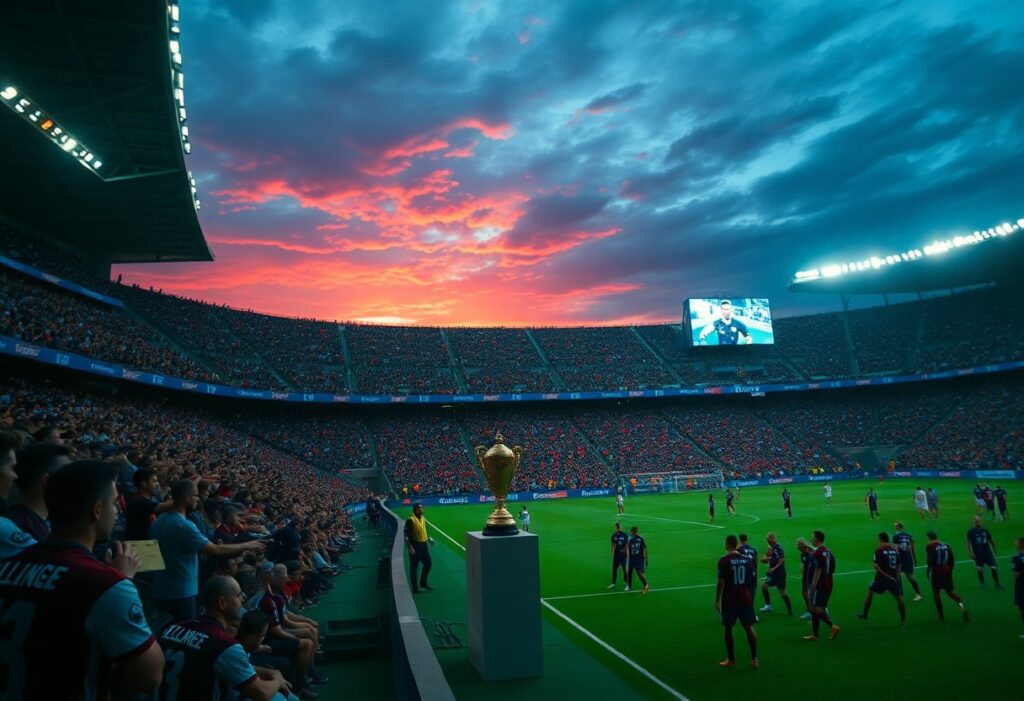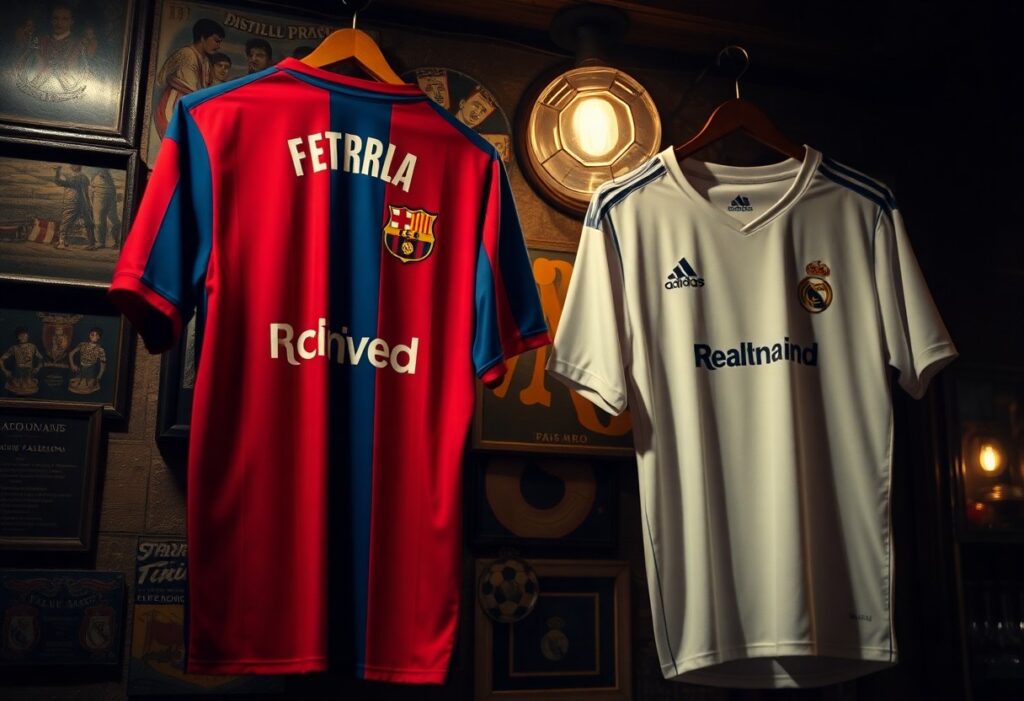
Just as the Champions League continues to elevate the biggest clubs in European football, it also shines a spotlight on young talent making significant impacts on the global stage. From debut goals that turn the tide of knockout matches to breathtaking performances that showcase their skill, this tournament has witnessed an array of exceptional young players rising to prominence. In this blog post, we explore the stories of those youthful athletes whose contributions have left an indelible mark on the competition.
Historical Context of Young Talents
The Champions League has long been a stage where youth meets experience, showcasing exceptional young talents who reshape the narrative of European football. Over the decades, clubs have increasingly turned to their academies, recognizing the potential of nurturing young stars within their ranks. This shift reflects a broader trend in football, emphasizing youth development as a pathway to success.
Evolution of Young Players in the Champions League
Changes in club philosophies have led to a significant increase in the representation of young players in the Champions League. Historically, top clubs relied heavily on established stars, but recent years have highlighted a growing trend toward integrating teenage talents into high-pressure matches. This evolution has transformed the competition, making it a proving ground for the next generation.
Milestones in Youth Representation
Key milestones in youth representation have marked a shift in the Champions League landscape. Since the 2010s, numerous records have been broken, including Jadon Sancho‘s impact at Borussia Dortmund and Pedri‘s contribution to Barcelona, exemplifying the success of young players on this prestigious stage.
The emergence of young players making headlines in the Champions League reflects a distinct change in how clubs approach talent. For instance, the groundbreaking debut of Ronaldo Nazário at just 16 years old for PSV Eindhoven in 1994 set a precedent for future generations. More recently, players like Kylian Mbappé, who made his mark with AS Monaco at age 17, have demonstrated that not only can youth compete, but they can also thrive in high-stakes scenarios. This trend has led to increased scouting and investment in youth academies, resulting in more players becoming crucial to their teams’ successes at the highest level of European football.
Notable Rising Stars
The Champions League has seen an influx of young talent in recent years, with many players stepping up to perform on the grandest stage. Stars aged 21 and under are breaking through, showcasing their skills against experienced opponents. From dazzling dribbling to game-changing goals, these players not only enhance their teams but also capture the hearts of fans across Europe.
Profiles of Key Players
Among the standout young talents are players like Jude Bellingham and Pedri, who have already made significant contributions in crucial matches. Bellingham, with his vision and composure, has emerged as a midfield maestro for Real Madrid. Similarly, Pedri’s ability to control the tempo of the game showcases his maturity beyond his years, making them key figures in their respective squads.
Impact on Their Teams
These rising stars dramatically reshape their teams’ dynamics, often becoming pivotal in securing vital victories. Their ability to perform under pressure not only elevates their own careers but also invigorates their teammates. For instance, Jude Bellingham’s forward runs and goal-scoring prowess have transformed Real Madrid’s attacking play, while Pedri’s creativity has been central to Barcelona’s midfield cohesion.
Bellingham’s statistics speak volumes, with multiple assists and goals aiding Madrid’s progression in the tournament. His *average of 3.5 key passes per game* reflects his playmaking abilities. Likewise, Pedri’s *pass success rate exceeding 90%* demonstrates his reliability, making him an crucial cog in Barcelona’s strategies. Together, their performances are not just promising; they become game-changers, proving that youth can indeed thrive on this illustrious stage.
Statistical Analysis
Analyzing the performance of young players in the Champions League reveals insightful trends. A deeper investigate metrics such as goals, assists, and passing accuracy highlights the impact these rising stars have on their teams. Their contributions can sway matches, proving they are not just future prospects, but vital components in the present landscape of European football.
Performance Metrics of Young Players
Performance metrics illustrate the sharp rise of young talents in the Champions League. Players under 23 showcase impressive statistics with an average of 0.5 goals and 0.3 assists per game, often maintaining a passing accuracy above 85%. These figures demonstrate their effectiveness and influence in crucial matches.
Comparison with Established Stars
When comparing young players with seasoned stars, the statistics can be revealing. Youngsters often exhibit similar, if not superior, metrics in specific categories despite their experience. For example, a young player may have a higher rate of goals per minute played, demonstrating remarkable efficiency in high-pressure situations.
Player Metrics Comparison
| Metric | Young Players |
|---|---|
| Goals per Game | 0.5 |
| Assists per Game | 0.3 |
| Passing Accuracy | 85% |
While established stars consistently offer experience and leadership, young players often compete closely in key statistics such as goal efficiency and creativity on the pitch. The transition of young talents like Kylian Mbappé and Jude Bellingham into pivotal roles emphasizes the shifting dynamic in European football, where experience may soon be matched or surpassed by youthful exuberance.
Established Players vs. Young Talents
| Metric | Established Players |
|---|---|
| Goals per Game | 0.6 |
| Assists per Game | 0.4 |
| Passing Accuracy | 89% |
Case Studies
- Jude Bellingham – Played for Borussia Dortmund, scored 6 goals in the 2020-2021 season, becoming the youngest English player to score in the tournament at just 17 years old.
- Erling Haaland – Scored 10 goals in the 2020-2021 season, setting a record for the most goals by a teenager in Champions League history.
- Pedri – Contributed with 3 assists in his debut season (2020-2021) for Barcelona, becoming a pivotal player in key matches.
- Mason Greenwood – Became the youngest player to score in consecutive Champions League matches, netting a total of 4 goals in the 2020-2021 season.
Breakthrough Matches
Critical breakthrough matches define a player’s entry onto the global stage. For instance, when Jude Bellingham faced Manchester City in the quarter-finals (2020-2021), his composure and skill caught the attention of fans and scouts alike, marking a key moment in his young career.
Memorable Goals and Performances
Memorable goals and standout performances solidify a young player’s reputation. Erling Haaland’s hat-trick against Sevilla in the round of 16 (2020-2021) showcased his lethal finishing ability, putting him firmly in the spotlight as one of the tournament’s brightest young talents.
Future Prospects
The future of the Champions League is undeniably bright, with a generation of young players poised to make their mark. As clubs increasingly invest in youth academies and scouting networks, these talented individuals are gaining valuable experience on the European stage. With the potential to redefine the competition, they embody the merging of skill and youth, offering fans excitement for the seasons ahead.
Upcoming Young Talents to Watch
Several young players are capturing attention as potential game-changers in upcoming Champions League campaigns. Notable prospects include Jude Bellingham, whose performances for Real Madrid have made him a focal point for both club and country, and Giovanni Reyna, showcasing electrifying skills with Borussia Dortmund. Teams are banking on these players not just to shine, but to define future successes in the tournament.
Trends in Youth Development
As clubs recognize the importance of investing in young talent, they are adopting innovative approaches in youth development. More clubs are implementing comprehensive training programs, prioritizing mental conditioning alongside technical skills. For instance, clubs like Barcelona and Ajax have shown success through their emphasis on homegrown talent, consistently integrating academy graduates into their first teams. This trend indicates a shift in focus towards nurturing long-term potential rather than merely relying on expensive signings.
Challenges Faced by Young Players
Young players stepping onto the Champions League stage encounter numerous challenges that test their resilience and adaptability. From fierce competition against seasoned professionals to navigating media scrutiny, these athletes must quickly adjust to high-stakes environments. The pressure can be overwhelming, and any misstep is magnified under the intense spotlight of the tournament.
Pressure and Expectations
The overwhelming pressure placed on young talents can be daunting. Expectations from fans, club management, and teammates often create an atmosphere where even minor errors are heavily criticized. For instance, players like Jadon Sancho at Borussia Dortmund faced immediate demand for consistent performance, forcing them to mature faster than their peers.
Strategies for Success
Adopting effective strategies for success is vital for young players in the Champions League. This includes mental conditioning, strong support systems, and targeted skill development. Players often work with psychologists to enhance mental toughness, while mentors help navigate the complexities of professional football.
To implement these strategies effectively, young players often engage in tailored training regimens that focus on both technical skills and psychological resilience. Mentorship from experienced players provides guidance, helping navigate off-pitch challenges. Clubs increasingly invest in sports psychologists to aid in mental fortitude, ensuring players can handle the pressures of high-stakes matches. Additionally, regular performance reviews help identify areas for improvement, allowing players to grow continuously while reducing the pressure of expectation by fostering a more supportive team environment.
Final Words
So, the Champions League has increasingly showcased young talent, highlighting their ability to influence matches and elevate their teams. Players such as Kylian Mbappé and Erling Haaland have not only made significant contributions on the pitch but have also redefined the expectations for youth in top-tier European football. Their performances serve as a reminder of the potential these rising stars possess, shaping the future landscape of the competition. As they continue to evolve, their impact on the Champions League will undoubtedly inspire the next generation of players.
FAQ
Q: Who are some of the notable young players that have made an impact in the Champions League?
A: Several young players have left their mark in the Champions League, including Kylian Mbappé, who showcased his talent with AS Monaco and later with Paris Saint-Germain, and Jadon Sancho, who impressed with Borussia Dortmund. Other notable mentions include Erling Haaland, who has consistently scored for Borussia Dortmund and Manchester City, and Pedri, who has become a key player for Barcelona in the tournament.
Q: What factors contribute to a young player’s success in the Champions League?
A: Key factors include technical skill, tactical awareness, and mental fortitude. Young players often rely on their pace and agility to make an impact. Experience in high-pressure situations, the support of seasoned teammates, and the ability to adapt to different playing styles also play significant roles in their success.
Q: How has the performance of young players in the Champions League influenced their future career prospects?
A: Strong performances in the Champions League often lead to increased visibility and can attract attention from larger clubs. Success in the tournament can enhance a player’s reputation, resulting in lucrative contract offers, endorsements, and national team call-ups. This exposure often serves as a stepping stone for further development and higher levels of competition.


